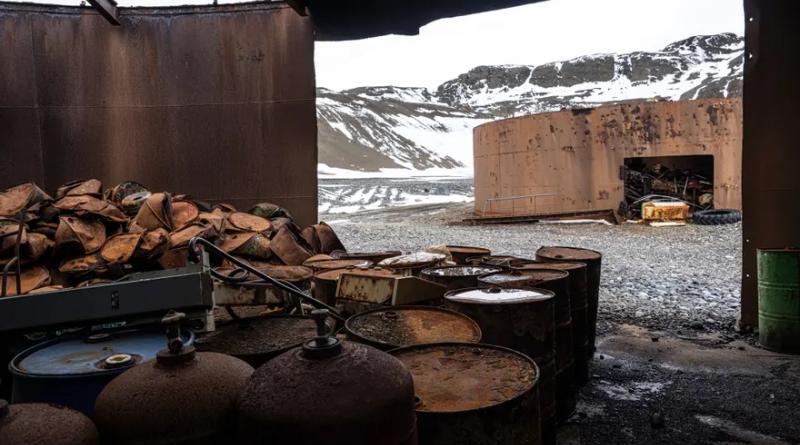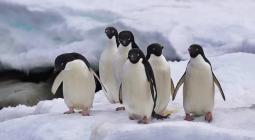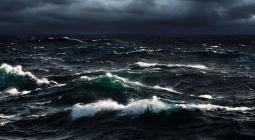‘The impact we have is vast’: scientists look to clean up Antarctica

A short walk into the biting wind from Villa Las Estrellas, a tiny Chilean village on the Antarctic peninsula, there is a cove which most scientists working at nearby research stations try to ignore.
A handful of penguins shiver in the shadows of six Russian fuel tanks and three squat siloes, rusted into swirls of gold, orange and brown and warped by the cold and wind.
Out of sight and out of mind, each is stuffed with detritus from decades of scientific and logistical work on King George Island, where six scientific research stations operate within a 5km (3-mile) radius.
In one, dozens of PC keyboards are crammed into an old chest freezer, their keys stripped and mixed in with bottle tops and discarded beer cans with faded labels in Russian, German and Spanish.At the head of the beach stands a table football set blackened by fire, while stacks of 12-volt batteries, cracked by the cold, leak a greasy slick of battery acid. Fuel seeps on to the pebble beach from a row of rusty barrels labelled gasolina.
Grimly referred to as “Chernobyl” by some who pass through Villa Las Estrellas, the dump on King George Island is an open reminder of the impact humans continue to make after a century visiting Earth’s most pristine continent.
“It’s depressing,” Basque scientist Pedro Echeveste, 41, shouts over the noise of the wind. “For all of the good scientists do in Antarctica, the impact we have is vast.”
Although the majority of waste is now packaged and sent away from Antarctica on ships, the human footprint is plain to see.In October 1991, a protocol on environmental protection was signed in Madrid, setting out minimum standards for environmental management and reiterating that Antarctica is a “natural reserve, devoted to peace and science”.
It came into force in 1998 and has been signed by all 29 consultative parties of the 1959 Antarctic Treaty System (ATS) which governs the continent, as well as 13 other nations.
Among its recommendations, the protocol stipulates that environmental impacts caused by any new infrastructure should be monitored regularly – although two-thirds of research stations were built before its adoption – including any disruption to habitats.
Yet enforcement is largely left up to individual scientific programmes and missions.
“Regulation is a huge problem,” said Dr Jasmine Lee, a research fellow with the British Antarctic Survey (BAS) who studies the sustainability of human involvement in the far south.
“And the crux of it is geopolitical – nobody is going to turn around and tell you to take action, because there can be repercussions for something else one of the parties might be trying to get approved.”
At present, 56 nations are signatories of the ATS, and 42 of these countries have a physical presence in Antarctica. One 2019 study estimated that of Antarctica’s 12m sq km of ice and rock, the combined footprint of these bases is 390 sq km, largely around the perimeter of the continent.And this footprint is likely to increase as more nations seek a scientific or geopolitical presence in the far south. Less than one in six of the 193 member states of the United Nations are part of the ATS, with Africa and the Middle East particularly underrepresented.
Some of the anthropogenic effects on Antarctica’s wilderness are more visible than others.
Echeveste, an academic at the University of Antofagasta in northern Chile, made his third trip to Antarctica this summer. Alongside two colleagues, Maritza Fajardo and Karola Soto, he spent more than a month on King George Island collecting water samples.
“When you see a bird carrying a plastic bottle or a container filled with old oil drums, these are the most obvious impacts – but there are so many others which have already been incorporated into food chains and ecosystems,” said Echeveste.
His team have been able to detect antifreeze and fuel residue, as well as components from sunblock and beauty products, in seawater.
And similar effects have been noted elsewhere. Last year, researchers from New Zealand found microplastics in every one of the 19 snow samples they collected on Ross Island in west Antarctica.
Perhaps the most alarming example of a legacy of disregard for the environment is Winter Quarters Bay on the southern tip of Ross Island, where the US McMurdo station was established in 1955. Until 1981, inhabitants towed rubbish out on to the sea ice in the winter to let it fall through into the bay when the ice melted in the spring.
In 1999, one scientist declared that the bay had one of the highest toxic concentrations of any body of water on Earth. A 2001 survey counted 15 vehicles, 26 shipping containers and 603 fuel drums on 20 hectares (50 acres) of seabed.
While a tiny fraction of the Antarctic continent has been affected, human activity is frenetic in coastal areas.
“The ice-free areas of Antarctica make up less than 1% of the continent, but they concentrate almost all of the biodiversity and nearly all of the science,” said Lee.
The infrastructural footprint began with the first explorers’ huts in 1899, before whalers, seal hunters and finally scientists began to visit – and it continues to expand.
Despite calls for nations to share or reuse existing infrastructure, new stations continue to be constructed on pristine sites, and sustainability has only recently become a priority.
Some argue that there is little scientific justification for the expansion of infrastructure, with geopolitical aspirations often superseding research interests.
“Even just at the level of Chile’s presence in Antarctica, we have a lot to improve on,” said Constanza Mendoza, 29, a chemical and environmental engineer working with the water treatment systems at Chile’s Escudero base on King George Island.
This year she helped implement the first recycling scheme at the research base after a pilot programme last summer.
“It all depends on the will of each mission, and some are much less bothered about the impact we’re having on the environment than others,” she said.
While much of the infrastructure in Villa Las Estrellas is ageing, the Chilean air force base, which opened in 1969, contributes to sustainable practices with a worm-powered biofilter which breaks down organic waste the base produces.
However, generators burning 2,000 litres (530 gallons) of diesel a day provide the energy for Villa Las Estrellas, highlighting the alarming carbon cost of Antarctic science.
Others are imagining a more sustainable future.
Belgium’s Princess Elisabeth station, inaugurated in February 2009, is the only zero-emission Antarctic station, generating electricity from nine wind turbines and 284 solar panels.
Ongoing refurbishments to New Zealand’s Scott base include a replacement windfarm, and in 2018, the BAS announced its aim to reduce carbon emissions at its Antarctic stations and offices in Cambridge to net zero by 2040.
But the burden on the continent is only increasing, with more than 100,000 tourists visiting Antarctica this summer season alone – a record high.
“Today, you either need to be a scientist or very wealthy to go to Antarctica, and that isn’t fair or sustainable,” said Echeveste. “We need to think about who goes, because the impacts are only going to get more serious.”
As more people visit, the greater the chance that invasive species will be introduced, and as temperatures rise, the likelihood of them establishing themselves in the Antarctic biosphere rises with it.
Lee’s research has shown that some of the most cost-effective ways of reducing impacts on biodiversity include better planning and management for new infrastructure, but she concedes that some nations are better at following protocols than others.
“I don’t think it’s too late,” she said cautiously. “There are things we can do, like increasing biosecurity, removing non-native species as soon as possible, remediating contaminated sites and cleaning up rubbish.
“There’s a lot that can be done – it’s just the will to do it that varies.”
cover photo:Abandoned Russian oil storage tanks containing a large amount of waste. Photograph: Sean Smith/The Guardian





